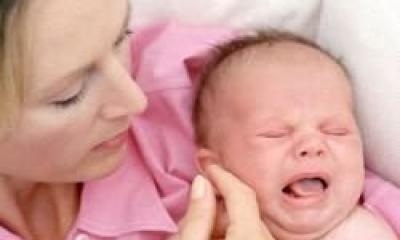Hippocrates, the father of Western medicine, was the first physician to test a patient's urine. He believed that its color reflects the state of human health and was right. Urinalysis is the most important and at the same time an easy way to diagnose diseases internal organs in children. Be sure to give the child a referral for this analysis in case of an inexplicable increase in body temperature. And in most cases, leukocytes are found in the child's urine. This fact is also called pyuria, leukocyturia or pus in the urine.
The norm of leukocytes in urine in children
- In the results of urine analysis in girls, up to 10 white blood cells (leukocytes) are considered the norm.
- The boy's level should not exceed 7 leukocytes.
Ideally, the leukocytes in urine should tend to zero.
The more cells are detected in the field of view, the more acute the disease progresses, which outwardly may not have any signs.
If protein and leukocytes are found in the analyzes
You need to collect urine again for analysis. It is likely that the protein got into the urine from the mucous membranes of the genital or urinary tract. If the results do not please you again, you need to urgently go to the pediatrician - probably the baby has pyelonephritis.
Why do leukocytes get into urine?
Thanks to the process with an incomprehensible name "phagocytosis", a person has been fighting bacteria and viruses for many centuries. The defenders are transparent blood cells - leukocytes. They absorb harmful microbes, and thanks to this, human life is preserved. BUT! In our case, it is important to find out whether the appearance of white blood cells in the urine in infants and older children is very dangerous.
If the child has a lot of leukocytes in the urine
First you need to remember how carefully my mother made sure that all the rules for collecting urine were followed. If she knew the importance of this process and washed the baby well with baby soap, used sterile and dry dishes for analysis, collected an average portion of the discharge, then we read below for possible reasons. If mommy missed some stage, it is advisable to take the analysis again in compliance with all recommendations.
The most common reasons for an increase in the level of leukocytes in the tests:
- Urinary tract infection (BMI). More common in girls than boys.
Kidney infection (pyelonephritis). This infection occurs in the bladder, and then rises to the kidneys. It often occurs in debilitated children who have had acute respiratory infections or chronic diseases for a long time.
The child takes too long before emptying the bladder. This leads to bacterial infection.
Inflammation of the external genital organs.
Metabolic disorders or allergic reactions.
Diaper rash.
Infection symptoms

The American Academy of Pediatrics has developed guidelines for the diagnosis and treatment of bladder infection (UTI) in children 2 months to 2 years of age. The directive states that each small child with an unexplained rise in temperature, it is imperative to be examined for a UTI.
Infants with UTIs also have non-specific signs and symptoms: irritability, vomiting, diarrhea, and even developmental delays. Urine must be collected before taking antibiotics. You can collect urine from a small child using a urine collector, which can be bought at any pharmacy.
An additional research method that will help determine the cause of leukocytes is ultrasound. Often elevated temperature and leukocytes may indicate other complications that are detected by ultrasound (eg, hydronephrosis, bladder abnormalities, and kidney stones).
Treatment
First you need to determine why leukocytes appeared in the child's urine. After that, appropriate treatment is prescribed. In most cases, a course of antibiotics is used. Treatment goals include eliminating infection, preventing urosepsis, and reducing kidney damage.
Antibiotics "injections" are given to those children who are dehydrated, vomit, or too young to use the drug orally. The remaining children are given oral antibiotics such as amoxicillin or cephalosporins. If after 2 days of therapy the effect is not observed, you need to pass urine again. Typically, treatment lasts 7 to 14 days.
In some cases, the child may need to be hospitalized.
Ways to prevent UTIs
- Remember, proper hygiene is one of the main factors that will help you avoid urinary tract infections. The baby's underwear and towel should be changed every day.
- Include in your child's diet (if he is already eating complementary foods or is old enough) foods rich in vitamins C and B. These vitamins support the immune system, which in most cases has to fight infection itself.
- Give your child more clean water.
- Watch your baby's stools, do not allow constipation to develop.
- Remember to wash your baby towards the buttocks, not vice versa.
Attention! This article is for guidance only and should not replace a visit to your pediatrician.
The number of leukocytes may increase with different diseases the child, therefore, white blood cells are always detected in blood and urine tests. What is normal, why white blood cells can increase and what to do if there is a large number of white blood cells in the baby's urine?
What do they show?
Normally, leukocytes enter the baby's urine in small quantities. Ideally, there should be no white blood cells in the microscope's field of view at all, although few are allowed.
If this indicator of urine analysis is increased, this leads the doctor to think about possible inflammatory processes in the kidneys, bladder or other parts of the excretory system. The more white blood cells are found under the microscope, the more acute the disease progresses. An increase in the level of white blood cells is called pyuria or leukocyturia.

Analysis methods
The traditional and most common examination of a child's urine, during which leukocytes are also determined, is a general urine test. It is he who is prescribed to all babies - both healthy and with suspected diseases.
If this examination has determined an increase in the number of leukocytes, the child may be prescribed clarifying urine tests, during which blood cells are counted not in the field of view, but in a certain volume - in 1 milliliter of urine (Nechiporenko test), in the volume allocated by the child per minute ( Amburge test) or per day (Kakovsky-Addis test).
What is the norm?
Normal leukocyte counts in a child's urine depend on the study being performed and the baby's gender:
What if the indicator is increased?
First of all, it is assessed whether the results could be false. To do this, most often prescribed to retake a general urine test. If the increase in the indicator is not very large (several pieces in the field of view), then often nothing needs to be done.
With a large excess of the norm, the baby is prescribed additional studies to confirm the presence of leukocyturia and find out its cause.

Could improper urine collection be the cause?
Indeed, leukocyturia may well be caused by impaired collection of the child's urine for analysis. For example, your baby's genitals may not be well washed or the urine may be collected in a non-sterile container.
Why can they send for a repeat analysis?
An increase in the leukocyte count in urine is usually the reason for another test, since the result can be false if:
- The child has ARVI or teething;
- The day before the baby had a lot of physical activity;
- The urine was collected incorrectly.
Also, a repeated urine test is prescribed at the end of the course of treatment for infections of the genitourinary system in order to evaluate the effectiveness of therapy and make sure that the baby is already healthy.

Possible reasons
Leukocytes begin to enter the baby's urine in large quantities when the walls of the kidney vessels become more permeable. This happens when a child has:
- Urinary tract infection. This is the most common cause of white blood cells in baby urine.
- Congenital disease of the excretory system.
- Injury to the ureters or kidneys.
- Vascular pathologies that feed the kidneys and other parts of the excretory system.
- Infection of the external genital organs of the child with the involvement of the urethra.
- Diaper rash in babies. They can appear due to the use of diapers, the predisposition of the crumbs to allergies and other factors.
- Amyloidosis or renal tuberculosis.
- Urolithiasis disease.
- Reflux in the ureters.

What other symptoms indicate illness?
If leukocyturia is a symptom of the disease, then the child may also have such signs of pathology:
- Difficulty or too frequent urination;
- Crying before urinating (indicates pain in a nursing baby);
- Complaints about painful urination (in older children);
- Pain in the abdomen or lumbar region;
- Discoloration of urine;
- Turbidity of urine, the appearance of sediment;
- Increased body temperature;
- Unpleasant smell of urine.
However, there are cases of asymptomatic bacterial infection in the urinary tract, when leukocytes in the urine are only the only sign of a problem.
Additional examinations
In addition to laboratory tests, the child is sent for ultrasound of the kidneys and urinary tract. If such a study did not reveal anything, but suspicions of the disease remain, the baby may be prescribed cystoscopy, X-ray examination or tomography.

Treatment
In the case when leukocytes in the urine become a sign of an infection of the urinary system, the child is prescribed treatment. The main purpose is an antibiotic, which has a wide range of effects. This medicine should only be prescribed by a doctor. In no case should parents give antibiotics to children if an increased number of leukocytes is detected in the urine on their own initiative.
If the antibiotics are taken for a long time, the child will also be prescribed medications to keep the intestinal microflora normal. Depending on the clinical manifestations and diagnosis, the baby can also be prescribed antiseptic drugs, antipyretics, antispasmodics, herbal preparations.
Prevention
To prevent infections of the genitourinary system of children, which are often a symptom of pyuria, it is recommended:
- Do not neglect personal hygiene and do not forget to regularly change your baby's underwear.
- Replenish the child's diet with foods that support immunity.
- Give your child enough drink (clean water is best).
- Prevent the appearance of constipation in the baby.
- Wash the child towards the buttocks.

- So that the increase in white blood cells is not false, it is important to correctly collect urine from the child. This primarily concerns good washing and the sterility of the container into which the urine sample is collected.
- Urine should be delivered to the laboratory immediately after collection within 1-2 hours. For more accurate results, collect the first urine the child excreted in the morning.
You can find out more about leukocyturia by watching the video of the Union of Pediatricians of Russia.
Leukocytes in the urine of a child are a sign of the development of an infectious disease or an inflammatory process. Sometimes the tests are false positive, a second study is required to confirm or deny the data.
The test results showed that the leukocytes in the urine of the child are increased? The reasons for deviations from the norm, symptoms of diseases of the genitourinary system, methods of treatment - these and other issues are disclosed in the article.
What do leukocytes in urine mean?

Unlike erythrocytes, leukocytes with a heterogeneous structure do not have color, they are called "white blood cells". A group of human cells performs a protective function, provides strong immunity.
Normally, leukocytes are in the urine, but the level is negligible. A sharp increase in the number of white blood cells most often indicates the response of the immune system to a particular stimulus.
After the penetration of pathogenic microorganisms, leukocytes are activated, protecting the body from the invasion of harmful microbes. The result is the detection of an excess amount of white blood cells in the urine.
Results table
Pay attention to the indicators in the absence of negative reactions of the body and the response of the immune system to the stimulus. The values \u200b\u200bfor girls and boys are different: pay attention to this nuance.
Table of the level of leukocytes in urine in children
- pediatricians advise children to periodically take a urine test. Parents of infants and older children should take regular urine quality control seriously;
- some diseases at the initial stage have blurry, dull symptoms, there are no severe pains;
- often the main symptom of pathology becomes a violation of urination. There are no other noticeable symptoms, but the inflammatory process is already running;
- this is why urinalysis can help detect infection or inflammation at an early stage: high white blood cell counts will immediately indicate problems in the body.
Reasons for deviation from the norm
The body's response to a particular stimulus is often accompanied by the release of a large number of protective cells. Doctors point to several factors causing the response.
Main reasons:
- pyelonephritis;
- enterobiasis;
- allergy;
- inflammatory processes in the external genital organs;
- diaper rash of the groin area, on the buttocks;
- failures of metabolic processes;
- cystitis.
Note! Sometimes tests give a false positive result. There is no inflammatory process, but the indicators are really higher than expected. The reason is improper preparation for analyzes (the child ran, ate tightly, overcooled, took a hot bath). Sometimes the problem is caused by non-compliance with hygiene measures during urine collection: the baby is not washed away, bacteria from the genitals easily penetrate into the liquid for analysis.
Signs of an increase in leukocytes in the urine of an infant

Pay attention to the following symptoms:
- the baby urinates less often or too often. When urinating, there is soreness in the bladder, a burning sensation, cramps;
- the liquid becomes cloudy, darkens, a precipitate often appears in the form of flakes, foam on the surface (if the baby uses a pot);
- with an acute form of the disease, the child shivers, the temperature reaches + 38-39 degrees, there is a sharp pain in the abdomen, nausea, vomiting;
- sometimes negative processes are almost asymptomatic.
How to properly collect urine for analysis
- for a general analysis, morning urine is needed, produced immediately after waking up;
- prepare a sterile jar, special container or plastic container;
- a useful device - a urine collector - will help collect the right amount of fluid from infants. The thick plastic bag has a teardrop opening. Wash your baby, blot well the crotch or penis, secure the bag so that the urine gets into it immediately. Perform the operation in the morning, immediately after waking up;
- for older children, be sure to wash the genitals with baby soap, well remove the remaining soap suds, then give a jar or container for the material;
- after collecting the liquid for analysis, take it for research. If it is not possible to immediately transfer the container to the laboratory, store the container in the refrigerator. The laboratory assistant will tell you the terms and rules of storage.
If, according to the results of the analysis of leukocytes, more than normal, the doctor will prescribe additional studies, urine culture is often performed. A special test shows the type of infectious agent that attacked the child's body. Bacterial culture is required to determine the antibiotics that most actively suppress the activity of the identified pathogen.

Parents need to know how to proceed before collecting urine from children. Violation of the requirements also provokes incorrect indicators.
What to do:
- consult a doctor, find out the rules for collecting urine, the timing of delivery of the material to the laboratory;
- if the baby is taking medication, be sure to warn the attending physician and laboratory assistant;
- antibiotic therapy should be completed 2 weeks before the control study;
- shortly before collecting the material, you cannot perform physiotherapy, do ultrasound, radiography of various parts of the body;
- if there are dietary restrictions, adhere to them, otherwise the results will be incorrect or incomplete.
What to do if leukocytes are high
After passing the tests, be sure to show the results to the pediatrician. If necessary, the doctor will refer you to a nephrologist, allergist or endocrinologist for consultation.
Treatment of diseases in infants and older children is carried out according to an individual scheme. Parents should not buy drugs with the help of which a neighbor's child got rid of a similar pathology.
Find out about characteristic features and symptoms of otitis media in a child.
Therapies and drugs depend on many factors:
- test results;
- the severity of the pathology;
- diagnosis;
- the age of the young patient;
- contraindications;
- tendency to allergic reactions;
- the presence of concomitant diseases.

If infectious agents are identified, the doctor will select antibiotics suitable for age. Children early age a limited list of antibacterial compounds is suitable, a balanced approach to prescribing drugs is required.
You can't self-medicate give at your discretion decoctions of medicinal herbs, make compresses, lotions, use homemade ointments. Only a doctor will determine the type of disease and prescribe treatment. The therapy regimen, diet, physiotherapy procedures are also prescribed by the attending physician.
Unfortunately, some moms rely entirely on herbs and folk methods, especially if the child has grown a little. With improper home therapy, the disease often becomes chronic, developing dangerous complications... The younger the child is, the more difficult it is to treat advanced pathologies of the urinary system.
Helpful hints:
- a suitable drug for antibiotic therapy will be selected by a pediatrician or specialist;
- not all antibiotics act equally on identified infectious agents;
- if mom, on her own initiative, gives a "proven" drug, she often provokes the development of bacteria resistance to certain antibiotics;
- "Weak" antibacterial agents only harm the treatment, delay the healing process;
- it is to determine the most "strong" drug (for a specific case) that urine culture is performed.
Did the urine test show that the child has high leukocytes? If repeated studies have confirmed the primary diagnosis, take the doctors' recommendations seriously. Timely start treatment for the identified disease. Remember: neglected pathologies of the genitourinary system, endocrine disorders, a tendency to allergic reactions are difficult to treat. Therapy is often delayed for months or years.
An increase in the level of leukocytes is evidence of an inflammatory process in the body. Sometimes the reason for the overestimated indicators is improper preparation for the delivery of tests, but in most cases, leukocytosis and leukocyturia indicate pathological processes.
What to do if leukocytes are high in the urine of a child? The causes and treatment of diseases that this factor is a sign of are described in the article. Doctors give useful tips parents: how to recognize inflammation in the urinary tract in time, how to prevent relapses after curing an acute form of pyelonephritis, cystitis, ureteral lesions, genital infections.
general information

Cells of a heterogeneous structure are devoid of pigment: for this reason, they are called white. Leukocytes penetrate to the focus of infection, find dangerous pathogens, destroy microbes and viruses.
White blood cells suppress not only external but also internal infection. With the active reproduction of pathogenic microorganisms, leukocytes increase, actively fight infectious agents.
The more leukocytes in urine or blood, the easier it is to establish the degree of protection of the body. In an inflammatory process, the level of white blood cells in urine is increased. If it is also found, then with a high degree of probability it is possible to assume that the child has other inflammatory diseases of the urinary tract and genitals.
Causes of high leukocytes
The level and type of white cells in urine depends on the type of pathology:
- pyelonephritis. Many mononuclear leukocytes appear in urine, an active inflammatory process develops;
- ... The number of leukocytes is lower than with pyelonephritis. The reason is the allergic genesis of glomerulonephritis, the connection of pathology with the immune system. In urine, the level of leukocytes-eosinophils increases, which indicates the development of allergic inflammation.
High white blood cell counts are one of the hallmarks of other inflammatory conditions:
- ... Disease-causing bacteria and E. coli provoke inflammation in the tissues of the bladder. Due to the short urethra, the close location of the anus, the external genital organs, the disease is more often diagnosed in girls. Cystitis often develops against the background of stagnant urine;
- ... Poor quality water leads to the deposition of salts in the urinary tract, even in young children. Large ones often block the ureter, the outflow of urine worsens. Bacteria develop in the stagnant liquid;
- allergic diseases. With immunological failures, allergic inflammation develops, the number of eosinophils increases;
- inflammatory process in the delicate mucous membrane of the genital organs. The causes of inflammation are poor care of the genitals, rare diaper changes in infants. The penetration of pathogenic microflora into the mucous membrane, activation of lymphocytes, the appearance of white bodies along with mucus in the analysis of urine were noted. In the absence of negative processes in the genitourinary system, the excreted fluid in the child is transparent, light yellow, blood, various inclusions are absent. The appearance of specific impurities should prompt parents to examine the child with a pediatric urologist and gynecologist.
On a note! There is no such thing as leukocytes are lowered in urine. Normally, white blood cells are absent in urine. Abnormalities are indicated not by a low, but by a high level of leukocytes. The appearance of white blood cells in excess of the established norms indicates an inflammatory process. Occasionally, the reason for the overestimated indicators lies in the improper preparation of the little patient for tests: the child ate a lot of protein food the day before, took a hot bath in the morning, the parents did not wash the genitals of their son or daughter well before collecting urine.
In what cases is the analysis assigned?

The doctor recommends passing urine if you suspect the development of inflammatory diseases in the bladder, genitals, kidneys, ureter. The appearance of signs of pyelonephritis, urethritis, cystitis, glomerulonephritis is a reason for collecting urine.
Indications:
- pain in the bladder, lower abdomen, in the lumbar region;
- clouding of urine, the appearance of mucus, blood, "flakes" of protein, sand, purulent masses in urine;
- deterioration in well-being, pain syndrome, fever combined with a change in the appearance of urine;
- problems with urination, pain during the process or immediately after removing fluid;
- chills, fever combined with weakness, lethargy, puffiness on the body, legs, near the eyes. In children, swelling most often appears on the lower eyelids;
- babies not only change appearance urine, but also anxiety is manifested, the baby is capricious, refuses to breast, cries. Often the crumbs have a fever, pus and mucus are released from the urethra.
The pediatric urologist prescribes an analysis to confirm the diagnosis:
- cystitis;
- pyelitis;
- glomerulonephritis;
- pyelonephritis.
There are no contraindications to the delivery of urine to determine the level of leukocytes. It is easy to collect urine to identify a possible inflammatory organism even from infants. It is important to remember the rules for preparing for the analysis, to prevent false positive or false negative results. With ARVI, an increase in indicators is also possible.

- during the day before the study, reduce the volume of protein foods, foods with ascorbic acid to the child;
- you should not bathe children in hot water, allow preschoolers and schoolchildren to train intensively;
- urine is collected in the morning, the best option is from 7 to 10 hours. At the pharmacy, you need to purchase a sterile container with a tight lid for storing the collected material;
- the first stage - washing the genitals with soap, thorough treatment with clean water. It is important to blot the areas with a clean napkin;
- the second stage is the collection of urine. Open the container, for a general analysis, release part of the urine (a little) into the toilet, after collecting the required volume of urine (from 50 ml), immediately close the container with a lid. If a small patient delivers the excreted fluid according to Kakovsky-Addis, then at the reception the doctor will tell you how to collect urine for bacterial seeding;
- deliver the material to the laboratory no later than two hours after filling the sterile container. Liquid should not be frozen or stored in too hot room.
Important! Collecting urine in a non-sterile jar can result in a false positive test for bacteria. For this reason, doctors advise taking a specially prepared container for analysis, opening the container a few seconds before filling and immediately screwing the lid on. TO false positive result also results in collection of urine without prior genital hygiene.
What it shows: results
The level of leukocytes is a marker of the development of the inflammatory process. In the absence of an infectious lesion of the bladder, urinary tract, kidneys, transparent blood cells in the urine are not determined or the amount in the field of view during laboratory tests is minimal (not higher than the permissible norms).
An increased level of white blood cells indicates the penetration of viruses, dangerous bacteria. The second option is the increased reproduction of opportunistic microflora, for example, Staphylococcus aureus or Escherichia coli.
Deviations in the number of leukocytes can be detected even in the usual. To confirm the indicators, the urologist recommends passing urine again after a couple of days. If the values \u200b\u200bcoincide, then you need to urgently search for the cause of the deviations, do, pass urine culture to identify the type of infectious agent. If you suspect the development of an immunoallergic pathology, it is important to find out the level of inflammatory mediators (donate blood).
In addition to taking medications and herbal teas, it is important to eat right to prevent irritation of delicate tissues. In the acute form of the inflammatory process, doctors prescribe bed rest for a small patient. With a severe form of pathology, the child is placed in a urological hospital for constant monitoring by doctors until the pronounced symptoms disappear.
Does a child's urinalysis show an elevated white blood cell count? Parents should definitely seek help from a pediatric urologist. It is important to remember what negative signs are manifested in a small patient. Most often, high leukocyte counts indicate the development of an inflammatory process, which must be eliminated until the pathology of the genitourinary system has become chronic.
Sooner or later, all parents face a urine test. And here two main problems arise: how to collect the urine correctly and how to understand what is written in the analysis results. Dr. Komarovsky will tell you more about the interpretation of the results and about leukocytes in urine in the following video:
General urine analysis (OAM) is one of mandatory research, which children regularly undergo, regardless of age, in the direction of a pediatrician. Due to its versatility, according to the data obtained through this analysis, it is possible to judge about many deviations in the state of the child's health at the earliest stage.
Also indicative and more highly specialized is urine analysis according to Nechiporenko. Human urine contains mineral and organic substances, as well as a small number of cells of various origins. What parents need to know if their child has an elevated white blood cell count during urine analysis?

Leukocytes are white blood cells, cells that, unlike erythrocytes, are responsible for maintaining the body's defenses and resisting diseases of bacterial and viral origin. They are one of the main components of the human immune system and are produced by red bone marrow.
After maturation in the bone marrow or thymus and lymph nodes different types leukocytes continue to circulate in the blood or are distributed throughout the tissues of the human body. Including present in the kidney tissue. When a person's health condition can be described as the norm, they are practically not excreted in the urine.
If a focus of inflammation appears in the body, a large number of leukocytes migrate there, especially of the type that is called neutrophils. There, they are involved in a complex multi-stage process - phagocytosis, during which these cells absorb, digest inside themselves and destroy the pathogenic bacteria.
As a result of this interaction with microbes, leukocytes die and are excreted in the urine in the form of pus, giving it a cloudy opaque color. The condition when leukocyte cells are found in the urine is called leukocyturia, and the discharge of pus is called pyuria. In case of inflammatory and allergic processes in the urine, a different number of red blood cells can be detected - erythrocyturia.
Standards table
Urine analysis according to Nechiporenko.
Normal indicators
The level of leukocytes in children's urine is somewhat different from that which is set as the norm for an adult. The differences are especially pronounced if we take the indicators for infants and newborn babies. This is due to the peculiarities of the work of the urinary system in early childhood.
For girls, the figures in the tables for OAM and the Nechiporenko analysis are one or two units higher than those for boys. The reason for this is the difference in the structure of the male and female external genital organs. Because of this, leukocytes from the mucous membrane of the genital tract can enter the girl's urine - this is the norm and is taken into account when counting.
It is important to remember that there are two methods for determining the presence of leukocytes in a portion of children's urine delivered to the laboratory.
General analysis of urine, in particular microscopy of urinary sediment. This counts the number of cells in the field of view of the microscope.
A more accurate analysis of urine according to Nechiporenko, where, after certain calculations, the number of leukocytes in 1 ml or 1 liter of liquid is found.
To begin with, consider what level of leukocytes should be in the child's urine if he underwent a general urine test.
What is the norm for OAM, how many leukocytes do not cause anxiety?
- In newborns and children under 1 year of age 5-6 in the field of view 8-9 in the field of view
- Children older than 1 year 3-4 in the field of view 5-6 in the field of view
The doctor is obliged to more closely examine newborns and children under 1 year old if he has more than 3 leukocytes in the field of view (less than 100% is the norm).
When should a doctor start to worry if his patient underwent a urine test according to Nechiporenko? What is the norm for this study, how many leukocyte cells can be found?
- The number of leukocytes in 1 liter of liquid Up to 2,000,000 (2 * 10 ^ 6) Up to 4,000,000 (4 * 10 ^ 6)
- The number of leukocytes in 1 ml of liquid Up to 2000 (2 * 10 ^ 3) Up to 4000 (4 * 10 ^ 3)
Analyzes found protein and leukocytes

What parents need to know if leukocytes are found in the urine analysis of their son or daughter (especially mothers and fathers are worried about newborn children)? Under what conditions are such research results possible?
- Violation of the analysis sampling technique (general or according to Nechiporenko).
If mommy didn’t wash the baby before taking morning urine (girls need to be washed away from the external genitals to the anus), then the result may be incorrect. - A false positive result is also possible if the urine was delivered to the laboratory technician later than 2 hours after collection. Parents should take into account that for the analysis according to Nechiporenko, it is necessary to collect a strictly average portion of morning urine.
- Before urine collection for OAM or for Nechiporenko, the child should not eat or drink.
The collection of liquid is carried out immediately after waking up and in the morning washing into a sterile container or into a urine collection bag (for newborns and infants), which are easy to buy at the pharmacy. For urine analysis according to Nechiporenko, 10-15 ml is required. - The day before urine collection, the child should not be subjected to heavy physical exertion. If, after intense sports, a boy or girl has leukocytes in the urine - this is the norm.
If a high level of leukocytes is found in a child's urine and, at the same time, the protein content is increased (more than 0.033 g / l), then we are talking about an inflammatory process in the kidneys.
Sometimes, depending on what kind of urinary tract epithelial cells are in the child's urine and if several fresh red blood cells have been found in the urine, a specialist can diagnose cystitis - inflammation of the bladder.
With high leukocyte counts detected with OAM, the doctor always prescribes a urine test according to Nechiporenko.
Normally, protein is found in urine in trace amounts or not at all. Its presence indicates impaired renal function and increased permeability of the glomerular filter for blood proteins. High urine protein numbers are usually accompanied by a general severe condition of the child. This is especially dangerous for newborn boys and girls.
Analysis of urine and urinary tract infections - School of Dr. Komarovsky
Infection symptoms

Infections of the urinary system can be hidden or manifest in an acute form with a variety of symptoms. What should be alarming for parents when the norm in the child's health is violated?
- Changes in the amount, color, odor, consistency, transparency of urine;
- Change in frequency or soreness when urinating;
- A burning sensation in the urethra;
- Swelling in the morning in the face, especially around the eyes, accompanied by pallor of the skin;
- Increased blood pressure and prolonged headache in a child, pain in the region of the heart;
- Increased body temperature and symptoms of intoxication (weakness, lethargy, apathy, nausea and vomiting);
- Soreness in the area of \u200b\u200bthe projection of the kidneys (lower back) - in newborns and children under 2 years of age, this symptom will not be due to age-related anatomical features.
Often, problems can begin after a baby has suffered from ARVI or influenza, sometimes pathology can be the result of various childhood infectious diseases.
Changes in urine tests: leukocyturia - what you need to know?
Prevention

How to protect your child from kidney and urinary tract diseases?
- For newborns and babies, strictly follow the rules for caring for them, older children should have independent hygiene skills (toilet of the external genital organs, daily change of underwear, regular change of towels - for children over 5 years old - this is the norm).
- Children, regardless of age, should drink enough water. This is especially important for newborns and babies under 1 year old.
- The child should eat fully and variedly, his food should be rich in ascorbic acid and B vitamins.
When should i see a doctor?

There are a number of symptoms in diseases of the genitourinary organs, when the norm in their work is sharply violated. When they appear, you need to show the child to a specialist as soon as possible and call ambulance (this is especially true for newborns and babies).
These include:
- A sharp or significant decrease in the amount of urine in less than half a day;
- Cessation of urination;
- Intense unbearable pain in the projection of the kidneys (lower back) and lateral parts of the abdomen, which radiates to the groin;
- Increase in body temperature to 39-41 degrees, confusion and lack of consciousness;
- Incessant vomiting, diarrhea, etc.
Remember that the correct decoding of your child's urine analysis (general and according to Nechiporenko) is possible only by an experienced urologist. He is the only one who will be able to indicate where the norm is and where the pathology is, determine the cause of the increased white blood cell count and prescribe the correct treatment.








